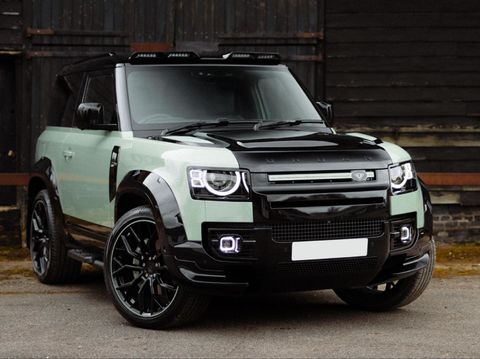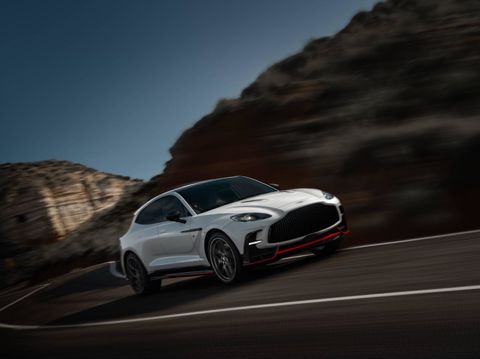Rear Wheel Drive Vs All Wheel Drive

When choosing a vehicle, especially a prestige vehicle, drivetrain is an important factor to consider. The most common configurations are rear wheel drive (RWD) and all wheel drive (AWD). Each has their own characteristics, benefits and compromises, depending on driving style, road conditions and personal preference. We delve into a comparison between the two.
What Is Rear Wheel Drive?
In a rear wheel drive setup, power from the engine is directed to the rear wheels only. This configuration separates steering from propulsion, which can lead to more balanced handling characteristics. It has been a traditional layout in many luxury saloons and performance cars, particularly those that prioritise control at higher speeds and responsive cornering.
Advantages of Rear Wheel Drive:
- Offers balanced handling in dry conditions due to better weight distribution
- Steering and power delivery are handled separately, which can enhance road feedback
- Typically less complex than AWD systems, which may lead to simpler maintenance
Limitations of Rear Wheel Drive:
- Traction can be reduced in wet, icy, or uneven conditions
- Less effective on loose surfaces or steep inclines compared to AWD
- Not ideal for off-road use or poor weather if not combined with modern traction aids
Rear Wheel Drive Examples
BMW 5 Series
The BMW 5 Series is a longstanding executive saloon that makes use of a rear wheel drive platform in many of its configurations. This layout supports its emphasis on composure and road dynamics, particularly for motorway driving and urban commuting. With its calm, assured handling, the 5 Series remains a popular choice for those seeking a balanced, professional driving experience without unnecessary complication.
Mercedes-Benz E-Class
The E-Class from Mercedes-Benz also features rear wheel drive in a number of its variants. Known for its smooth ride and refined cabin, the E-Class benefits from this drivetrain by maintaining steady, predictable handling. It suits those who drive predominantly on tarmac and want a car that behaves consistently in everyday road conditions.
Jaguar F-Type
The Jaguar F-Type is a prestige sports coupé that uses rear wheel drive in several models to focus on controlled, engaging driving. With power going to the rear, the F-Type delivers a more linear feel through corners and maintains a traditional sports car layout. While higher-powered variants are also available with AWD, the RWD models cater well to drivers who prefer a focused road experience on dry, even surfaces.
What Is All Wheel Drive?
All wheel drive systems distribute engine power to both the front and rear wheels, either full-time or on-demand. AWD vehicles use sensors to monitor road conditions and can adjust power delivery accordingly. This provides enhanced stability and grip, especially in adverse weather.
Advantages of All Wheel Drive:
- Increased traction on wet, snowy, or uneven roads
- More controlled acceleration in low-grip conditions
- Can add reassurance for drivers in changeable weather or mixed environments
Limitations of All Wheel Drive:
- Added mechanical components make AWD systems heavier and more complex
- Often results in higher fuel consumption than RWD counterparts
- Maintenance can be more costly due to additional drivetrain parts
All Wheel Drive Examples
Audi A8 Quattro
The Audi A8 is the brand’s flagship saloon and comes equipped with Audi’s Quattro all wheel drive system. This setup provides consistent grip in varying weather and road conditions, making it suitable for business users who travel throughout the year. The system works quietly in the background and offers a sense of control in both urban and motorway environments.
Bentley Bentayga
The Bentley Bentayga uses a permanent all wheel drive system to complement its role as a large, luxury SUV. Designed to offer a consistent driving experience across varied surfaces, the Bentayga’s AWD helps deliver traction in poor weather, on country roads and when travelling at speed. It suits those who want refinement alongside capability in a large vehicle.
Range Rover Velar
The Range Rover Velar incorporates permanent all wheel drive, making it a practical choice for those who may drive across mixed terrain. Whether it’s rural roads, light off-roading, or wet city conditions, the Velar’s system automatically adjusts power between the front and rear axles to maintain grip. It suits drivers who value comfort and practicality alongside road stability.
Choosing The Right Option For You
There is no universal answer to which drivetrain is better. Rear wheel drive may suit those who primarily drive on well-maintained roads and prioritise simplicity and predictable handling. All wheel drive may be more suitable for those living in areas with frequent rain, occasional snow, or varied road surfaces.
At Saxtons, we stock a wide range of both rear wheel drive and all wheel drive prestige vehicles. Our team will be able to help you compare options based on how and where you drive, ensuring you find the vehicle best suited to your everyday needs.




